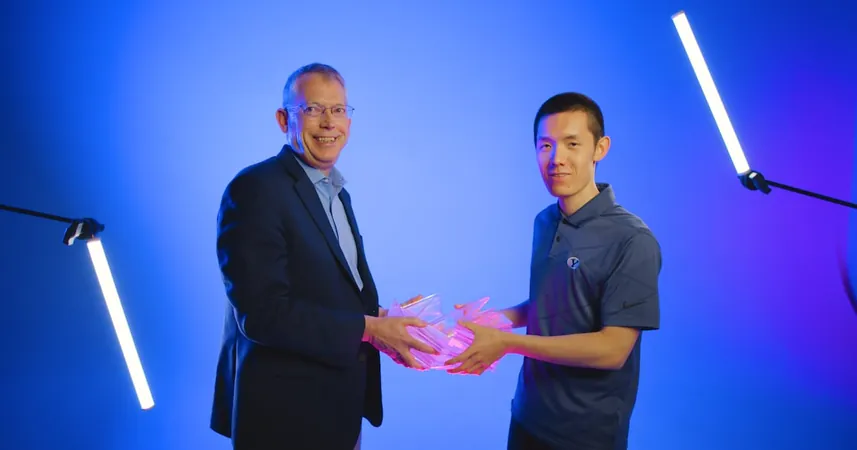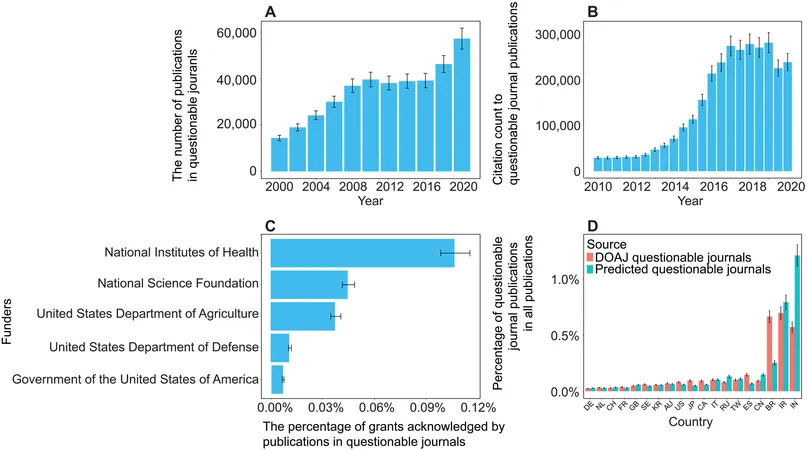
Unfolding Innovation: How Origami Could Revolutionize Engineering
2025-08-24
Author: Amelia
A Paper-Folding Discovery with Major Implications
Brigham Young University student Kelvin (Zhongyuan) Wang has combined his passion for origami with groundbreaking research, leading to a significant breakthrough in engineering. His findings, which could change the game for various industries such as aerospace, medicine, and architecture, showcase the profound impact of this ancient art form.
The Bloom Patterns: A Creative Leap
Wang's research introduces an innovative family of origami called 'bloom patterns.' According to Robert J. Lang, a leading origami theorist, these patterns are aptly named, as they unfurl like vibrant flowers. Lang and BYU professor Larry Howell, a global expert in compliant mechanisms, co-authored a paper in the prestigious Proceedings of the Royal Society, emphasizing the revolutionary potential of Wang’s discovery.
Unlocking Infinite Possibilities
Lang describes the implications of these bloom patterns as having 'uncountable infinity' of potential. Each design can lay flat, partially expand into three dimensions, and collapse neatly into layers—features rarely found together in origami. This unique combination offers immense technical and economic advantages, making it a game changer for engineering.
A Solution for Space Challenges
The bloom patterns could be crucial for addressing the conflicting demands of outer space: limited cargo space and the necessity for expansive instruments like antennas and solar arrays post-launch. Howell anticipates that these designs will allow for compact storage during transport, then fully deploy in space, maximizing efficiency.
From Ancient Roots to Modern Innovations
The research at BYU draws inspiration from ancient paper-folding techniques, notably Japanese origami, which dates back to the 16th century. The team emphasizes a unique intermediate state between flat and fully deployed forms, making this method not just innovative but flexible for various applications, such as devices resembling bowls or dish antennas.
Art Meets Engineering: A Personal Journey
Wang views origami not only as a means of creative expression but as a transformative engineering tool. He relishes the repetitive yet meditative nature of folding paper, which fuels his creativity and inspires practical applications. 'If I can use origami to create solutions that benefit the world,' Wang says, 'that would be a dream come true.'
The Future of Design Is Here
As Wang continues to explore the intersection of art and engineering, his work represents a promising frontier that invites further innovation. This blend of creativity and practicality might just unlock new realms in technology and design, where the simple act of folding paper becomes a catalyst for groundbreaking solutions.









 Brasil (PT)
Brasil (PT)
 Canada (EN)
Canada (EN)
 Chile (ES)
Chile (ES)
 Česko (CS)
Česko (CS)
 대한민국 (KO)
대한민국 (KO)
 España (ES)
España (ES)
 France (FR)
France (FR)
 Hong Kong (EN)
Hong Kong (EN)
 Italia (IT)
Italia (IT)
 日本 (JA)
日本 (JA)
 Magyarország (HU)
Magyarország (HU)
 Norge (NO)
Norge (NO)
 Polska (PL)
Polska (PL)
 Schweiz (DE)
Schweiz (DE)
 Singapore (EN)
Singapore (EN)
 Sverige (SV)
Sverige (SV)
 Suomi (FI)
Suomi (FI)
 Türkiye (TR)
Türkiye (TR)
 الإمارات العربية المتحدة (AR)
الإمارات العربية المتحدة (AR)